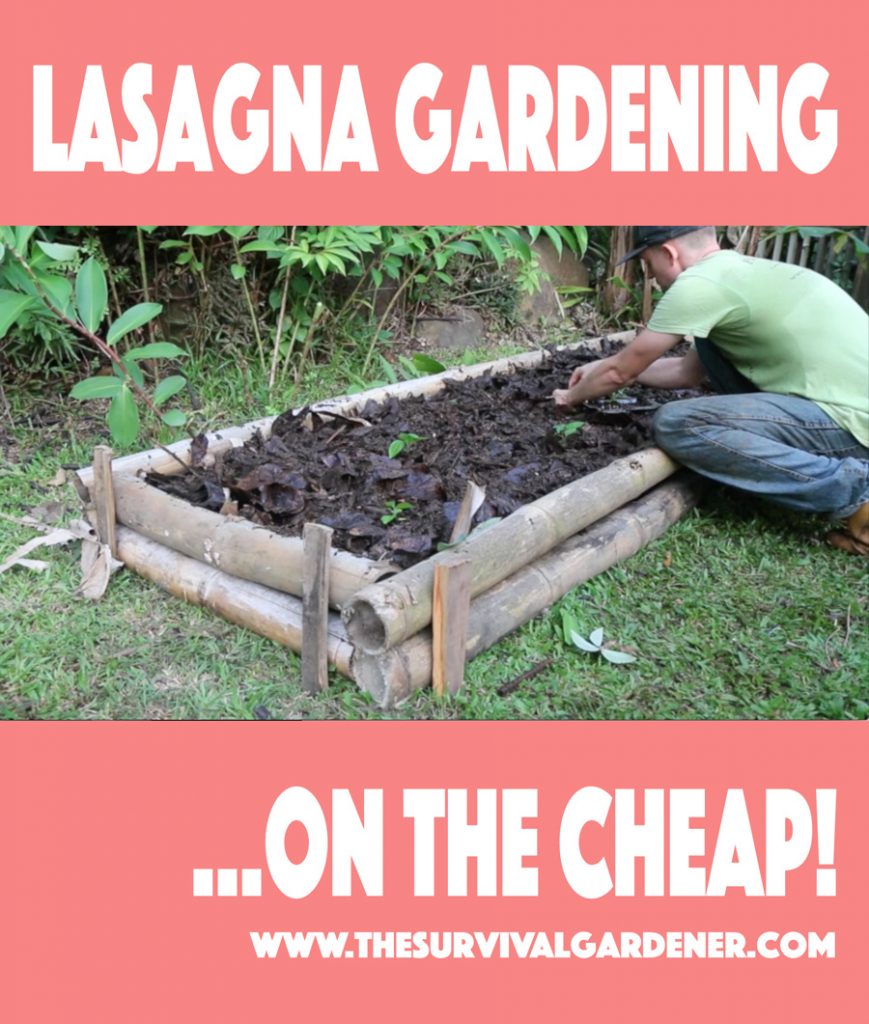Patricia Lanza’s book Lasagna Gardening inspired a lot of people, including myself.
I was reminded of the sheet-mulching / lasagna gardening method a couple of weeks ago when I re-watched Geoff Lawton’s excellent film Permaculture Soils.
There’s a spot out back near our gardens that often gets soppy wet in the rainy season. It also has hard clay and rocks beneath the grass. Yet I wanted to do some gardening there.
The solution? A quick bamboo-sided “lasagna gardening” raised bed.
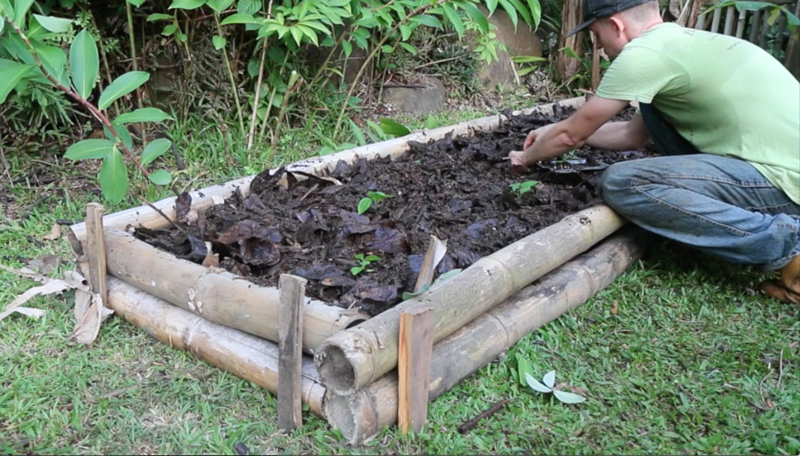
Easy Lasagna Gardening on the Cheap
Lasagna gardening is all about making lots of layers – here’s my latest video demonstrating this easy way to build a garden fast!
Are you ready to build your own lasagna garden?
It’s all about the layers… let’s get layering!
Layer 1: Manure and Seaweed
I started with a thin layer of cow manure and seaweed to encourage the soil life to eat up the grass and start loosening things, plus to provide nutrition.
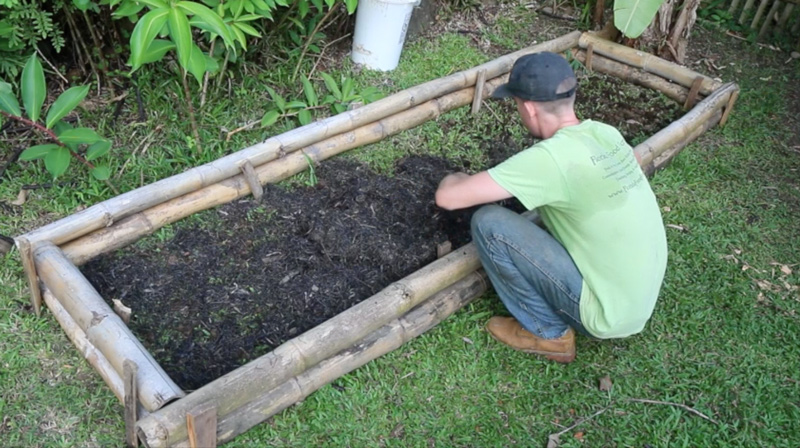
Geoff Lawton throws down just manure, but I have lots of seaweed available here and it’s loaded with good stuff.
For those of you in the states… watch out when using manure. It can destroy all your hard work!
Layer 2: Cardboard Weed Block
I bought Rachel a chest freezer… and it came in a great big cardboard box!
Naturally, I had to find a way to use that in the garden. Weedblock it is!
First, I laid the cardboard over the bed to get a rough size:
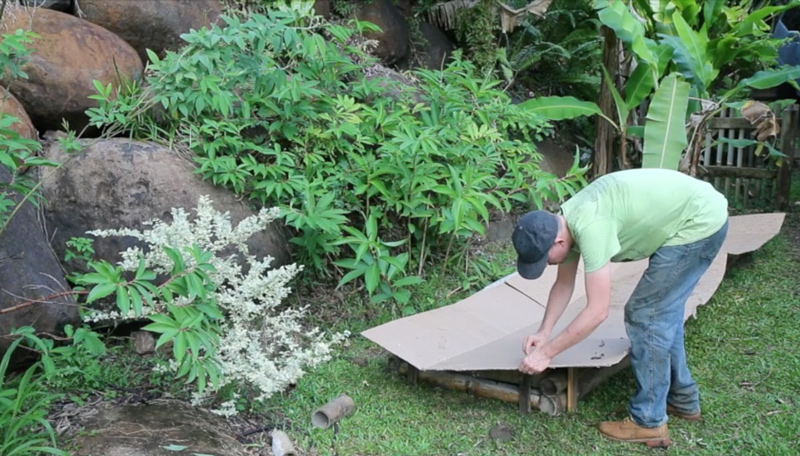
Then I stomped it into place. I wanted it all the way to the edges of the bed so pesky grasses won’t come through.
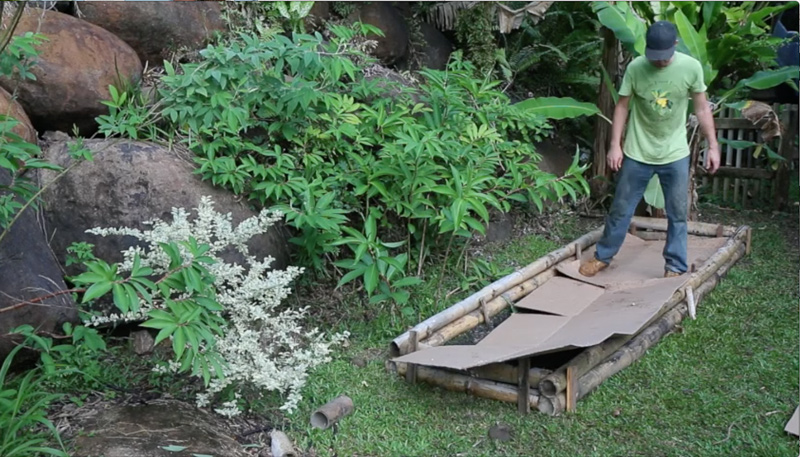
Layer 3: The Random “STUFF IT” Layer
After the cardboard was in place, it was time to start throwing down some biomass.
I used pigeon pea bushes and heliconia leaves.
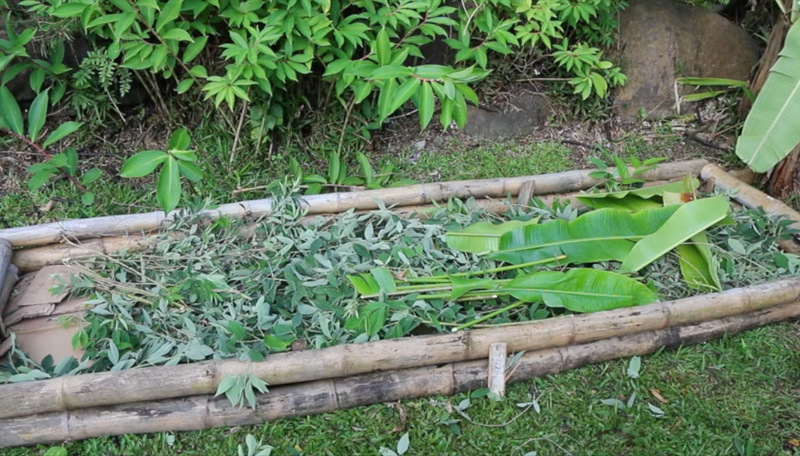
You can also use whatever brush you have lying around. Leaves, shredded paper, chunks of wood, whatever.
Layer 4: Kitchen Scraps
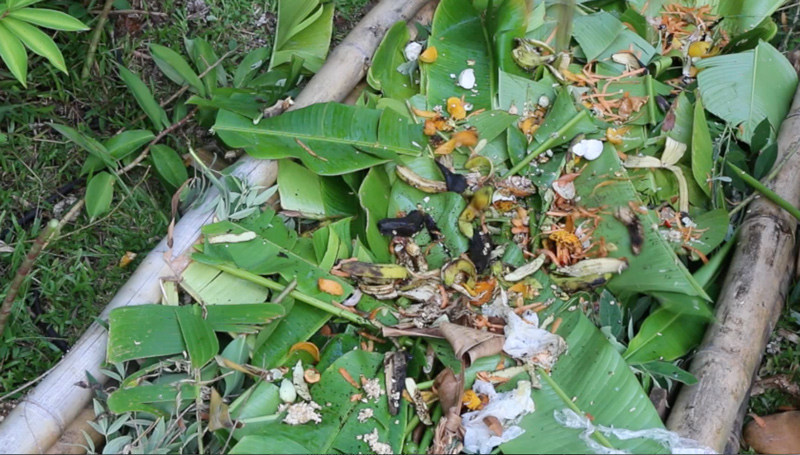
Why not?
Layer 5: Kitchen Scraps
The next layer was a thin one, made from sifted soil from my chicken coop.
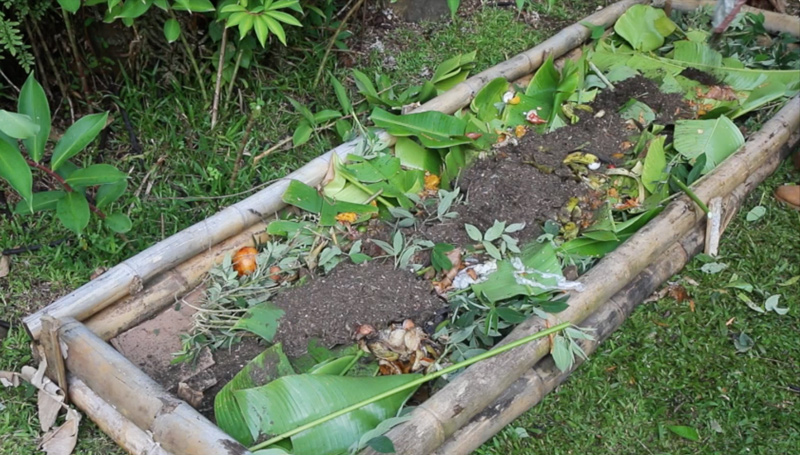
This is manure and compost-rich dirt with bits of biochar in it. You can see this composting method here.
There’s not a lot of rhyme or reason to these layers so don’t overthink things. Just throw in the compostable material you currently have available and let nature do the rest.
Layer 6: The Final Compost Planting Layer
And, to top it all off, I added a bunch of mostly-finished compost:
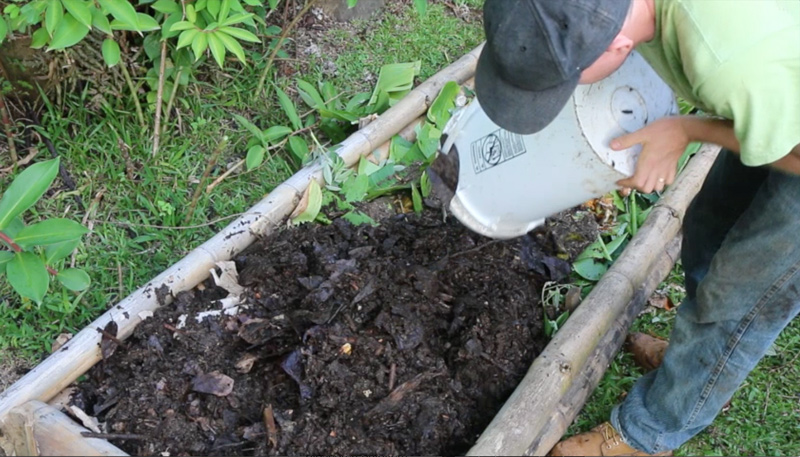
You really don’t need to fill the whole top layer with compost, though. You could just mulch with grass clippings or leaves over the whole top, then fill some pockets with good compost and plant transplants in those… which reminds me, that’s what I did next. Transplanted!
Transplanting into the New Lasagna Garden Bed
I had some bird peppers and a single tomato seedling ready to go… so they went in!

And then they were nicely watered in to settle the roots:
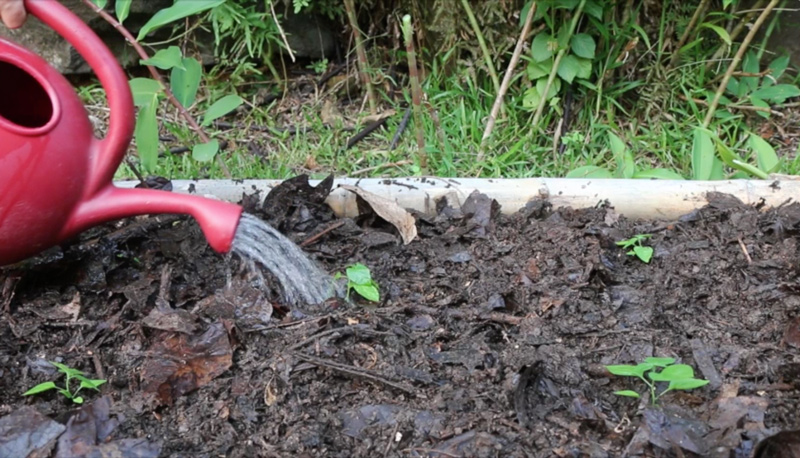
I watered them with compost tea for a little extra “juice” to ease the shock of transplanting, but that’s not really necessary.
If you have lousy soil, a poorly drained area, a lot of pesky grass you want to cover without digging, or if you’re just interested in the idea, give lasagna gardening a try. It works and the area where you throw down cardboard and organic matter like this will become one of the richest areas in your entire yard.
Everything in this bed was free. Granted, I did have to buy a chest freezer to get the cardboard, but hey – you can get cardboard anywhere!
Finally, I have more on this and other methods of composting in my book Compost Everything: The Good Guide to Extreme Composting.
And if you’ve done the lasagna gardening / sheet mulching thing in your own gardens, how did it work for you?
Let me know in the comments.
Enjoy this post? Put it on Pinterest!
